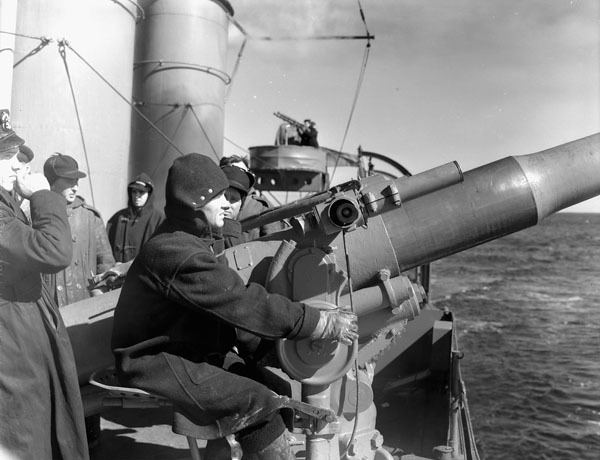Name USS McCook Laid down 10 September 1918 Decommissioned 24 September 1940 Construction started 10 September 1918 Length 96 m | Commissioned 30 April 1919 Struck 8 January 1941 Launched 31 January 1919 | |
 | ||
The first USS McCook (DD-252) was a Clemson-class destroyer in the United States Navy. Entering service in 1919, the ship had a brief active life before being placed in the reserve fleet. Reactivated for World War II, the ship was transferred to the Royal Navy and then to the Royal Canadian Navy and renamed HMCS St. Croix. Assigned as a convoy escort in the Battle of the Atlantic, St. Croix was torpedoed and sunk on 22 September 1943.
Contents
United States Navy service
Named for Roderick S. McCook, she was laid down on 10 September 1918 and launched on 31 January 1919 at the Bethlehem Shipbuilding Corporation; sponsored by Mrs. Henry C. Dinger. McCook was commissioned on 30 April 1919, Lieutenant Commander G. B. Ashe in command.
Following shakedown, McCook was assigned to Destroyer Force, Atlantic Fleet. She operated along the east coast until decommissioning at Philadelphia on 30 June 1922. She remained in the Atlantic Reserve Fleet until recommissioned on 18 December 1939. The next year McCook was designated for exchange under the Destroyers for Bases Agreement with Great Britain. Steaming to Halifax, Nova Scotia, she arrived on 20 September 1940. Decommissioned on 24 September, she was transferred to Great Britain on the same date, but due to manpower shortages in the Royal Navy, she was retransferred immediately to the Royal Canadian Navy and commissioned as HMCS St. Croix (I81). Following the Canadian practice of naming destroyers after Canadian rivers (but with deference to the U.S. origin), St. Croix was named after the St. Croix River forming the border between Maine and New Brunswick.
Royal Canadian Navy service
Delayed by repairs necessitated by hurricane damage, on 14 March 1941 St. Croix assumed escort and patrol duties in Canadian waters. At the end of August she joined the Newfoundland Escort Force and plied between St. John's and Reykjavík. By May 1942 the force had been renamed the Mid-Ocean Escort Force and its range extended to Londonderry Port.
St. Croix sank the German submarine U-90 on 24 July 1942, which, with other U-boats, had attacked her convoy (ON 113) on 23 July, sinking two merchantmen and damaging a third. On the return voyage, Convoy ON 127 was attacked by 13 U-boats. Between 10 September and 14 September eleven merchantmen and one destroyer were lost.
En route from Londonderry Port to Gibraltar on 4 March 1943 with convoy KMS 10, she assisted the corvette HMCS Shediac in the sinking of U-87 some 200 miles (320 km) off the Iberian coast.
With the addition of air escort to convoy defense in 1943, U-boat tolls in the North Atlantic diminished and many of the boats were withdrawn during the summer. In the fall, however, Germany began a new U-boat offensive. On 16 September, St. Croix, then on her first patrol with an offensive striking group in the Bay of Biscay, went to the aid of convoy ONS 18, followed by ON 202, both heavily beset by a wolfpack. The defense of these convoys resulted in a long-running battle with losses to both sides. The convoys lost three escorts and six merchantmen, with two escorts damaged. The wolfpack lost three U-boats.
St. Croix was the first escort to be sunk, taking three hits in the stern on 20 September. HMS Polyanthus was sunk by U-952 as she came up to screen Itchen's rescue operations. Itchen, forced to retire that evening, returned the next morning and picked up 81 survivors from St. Croix and one from Polyanthus. The following day, 22 September, Itchen herself was torpedoed. Three men were rescued, two from Itchen, one from St. Croix.
An additional member of the St. Croix crew survived by virtue of not having been aboard. Chester Francis "Frank" Rudolph was involved in a bar fight just prior to St. Croix leaving on her fateful final mission, and was prevented from shipping out due to a badly cut up hand. Naval officials did not realize initially that Rudolph had not been aboard, as his family received three telegrams stating he had been lost at sea, then rescued, then lost again, all the while he was in a military hospital in Halifax, Nova Scotia.
